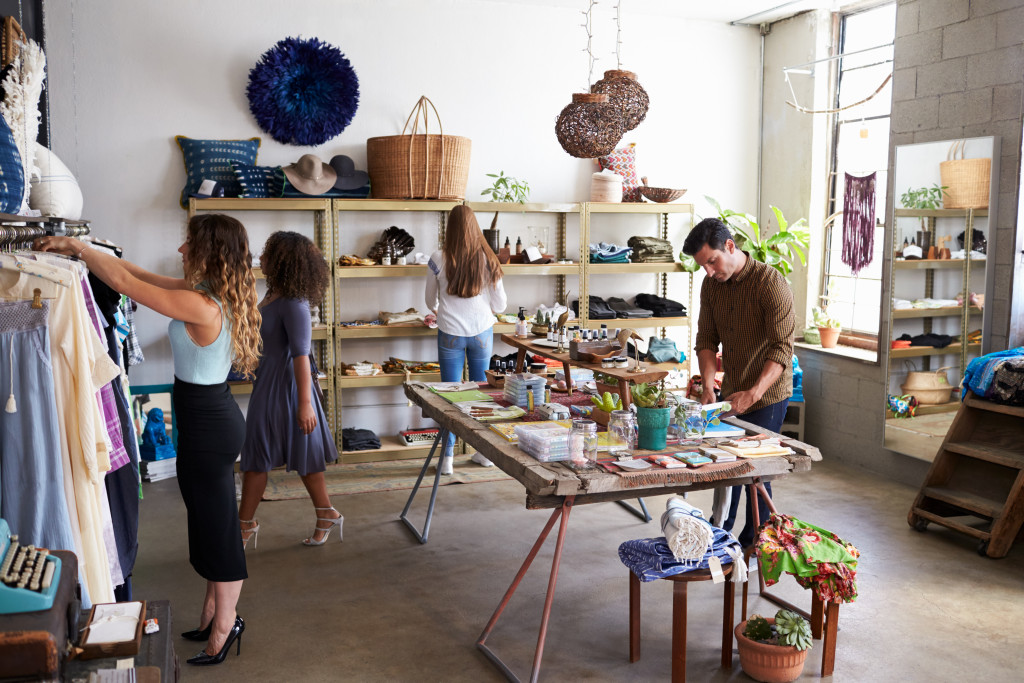Operating a thrift store might be a fantastic place to start a small company if you like shopping and supplying things at reasonable costs. A thrift shop offers used items such as clothes, jewelry, furniture, housewares, and books at rates lower than retail.
Nonprofit thrift shops feature enormous bins to drop off unwanted clothes and other goods. However, for-profit retail thrift businesses acquire worn products for resale. Either way, you will need specific tools to manage a successful retail secondhand business.
Below tactics might assist you in starting and running a successful thrift store.
Experience Matters
To manage a thrift shop, you must grasp the potential retail worth of products. You don’t have to assess items on the spot precisely, but you’ll need to recognize when a product has the probability of success for a high profit. Spend some time at your local flea market or pawn shop and take notes on how much these things are worth.
Work in partnership with specialists, such as art collectors and other specialty stores, who can assist you in assessing products. Over time, you’ll learn how to detect a valuable item and what state it has to be in to rake in the maximum money.
Increase your Network
A thrift store does not necessarily need to have products on its shelves to profit. If you need money quickly, create a network of nearby pawnshops, auction sites, and enthusiasts who are interested in the goods you have for sale.
Don’t depend entirely on store shelves to generate cash. They can become part of your revenue infrastructure if you already have broad sales channels.
Don’t Skip Organizing
Properly arranging your thrift shop allows clients to quickly discover products for sale, which can drive repeat purchases. As you open up to the public, think about the arrangement of your shop.
For instance, if you want to sell apparel, set up different displays for men’s, women’s, and kid’s things. Ensure that your products have gone through the dry cleaners to establish proper sanitation practices. You can further categorize garments by color and kind.
More so, it’s best to create distinct categories in your business for things such as home décor, kitchenware and dishes, furniture, gadgets, and books.
Buy Low, Sell High

Thrift shop operators look for bargains at yard sales, auctions, estate markets, and swap meetings. To locate the most incredible prices, you must have a technique for tracking them down. Day after day, go through the advertising pages of the local media and check if there are any exciting goods for sale and if any upcoming sales are being posted.
Offer your services as someone who can remove objects left behind by evicted renters for a charge to landlords. You could not only discover inventory for your thrift shop, but you can also open a company as a property clearing firm.
Offer Sale and Promotions
Hold deals on slow business cycles to entice clients to visit your shop. For instance, if you have fewer clients in the fall than at other times of the calendar, offer a particular category of goods, such as clothing or kitchenware, at half the price. Customers who come to your thrift shop to take full advantage of sales are more likely to buy non-sale products, which can help raise your business’s profits.
Train your Staff
A retail thrift shop owner spends a significant amount of time searching for merchandise throughout the nation. When you seek buying possibilities, you will have to recruit personnel to manage your shop. Spend time looking for shop employees you can trust and understand the retail industry. If you’re out spending corporate money on new goods, your employees become valuable assets to the success of your retail thrift shop.
Maintain Cleanliness
Keeping your thrift shop clean will help make it more appealing to a broad spectrum of consumers; a clean atmosphere keeps customers returning and can help generate successful word-of-mouth promotion to acquire new ones.
To prevent the musty odor that customers associate with charity shops, keep your floors cleaned and your store windows clean, and apply air fresheners. Also, change light bulbs regularly to maintain your thrift shop looking bright and attractive.
Starting a thrift shop depends on the marketability of your product. So, if you encounter an item that you’d never buy for you or your family, do not sell it in your business.
The quality of your management determines the reputation of your thrift business. Although most individuals make an effort to peek at these stores, others might find it uninteresting. So, focus on reaching these target markets and find ways to create a positive impression.
